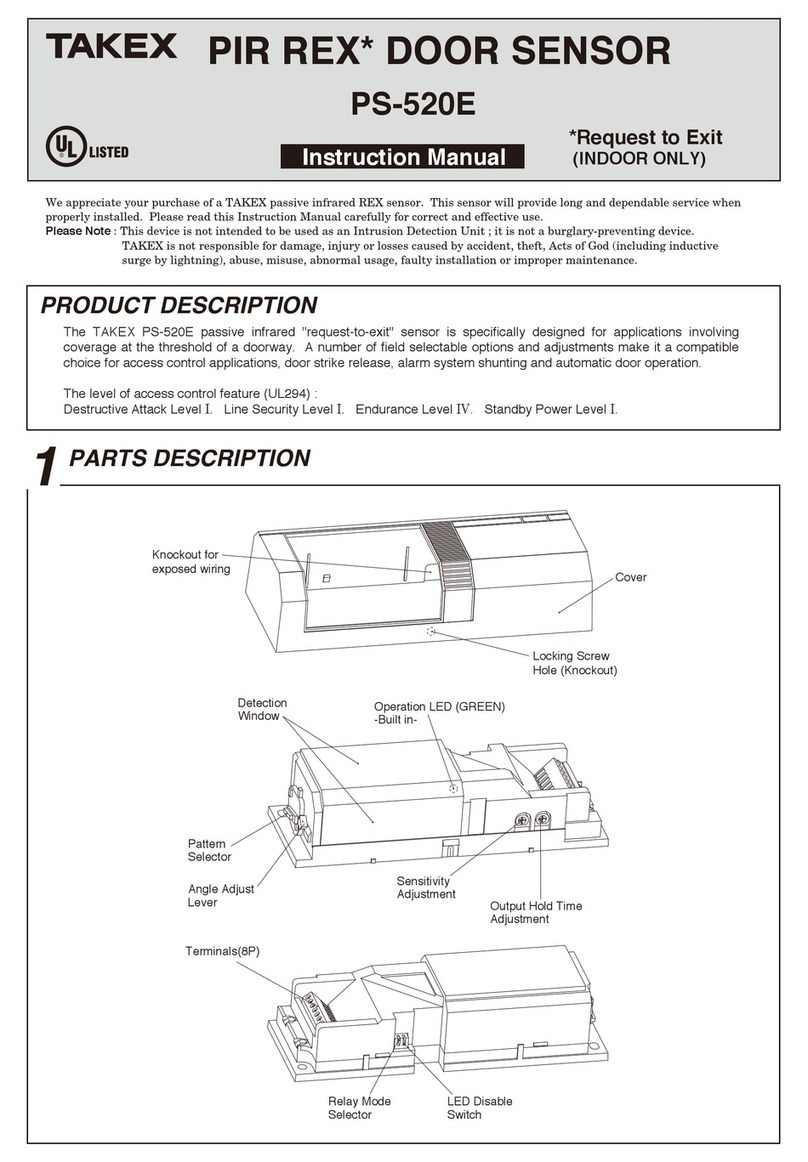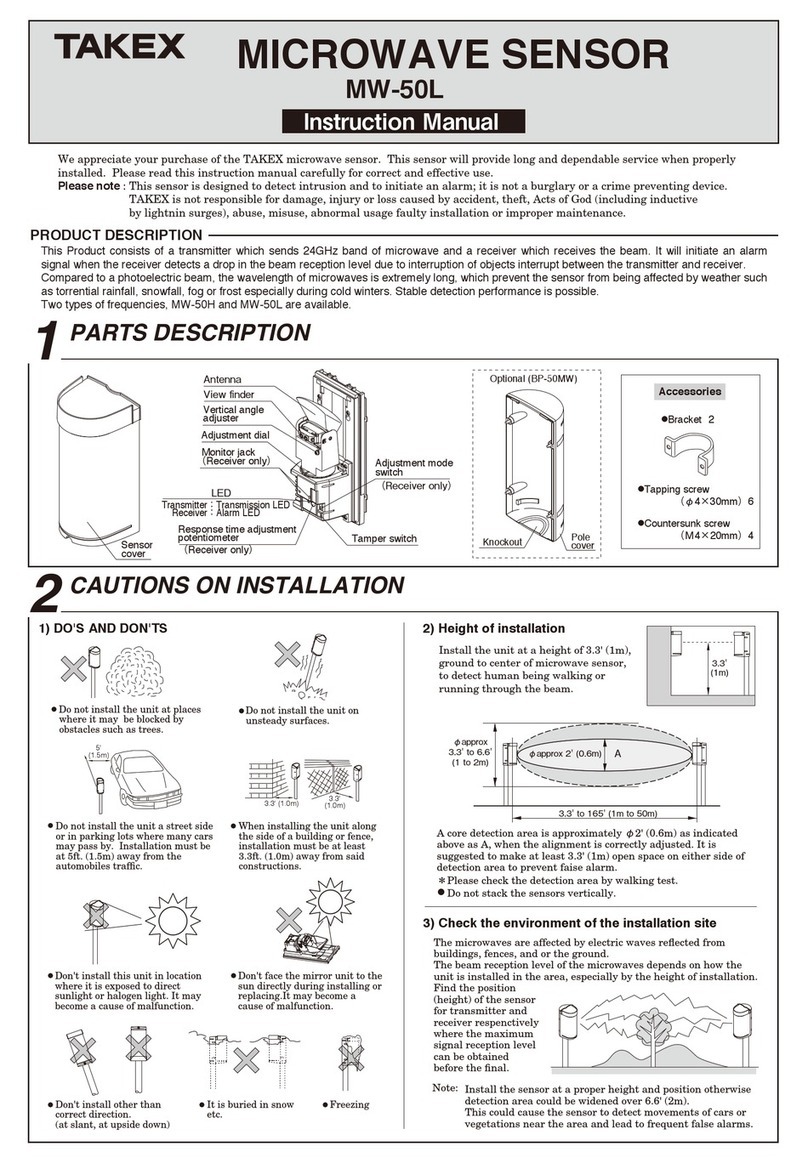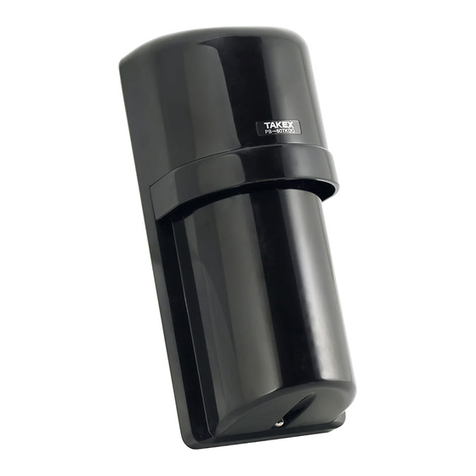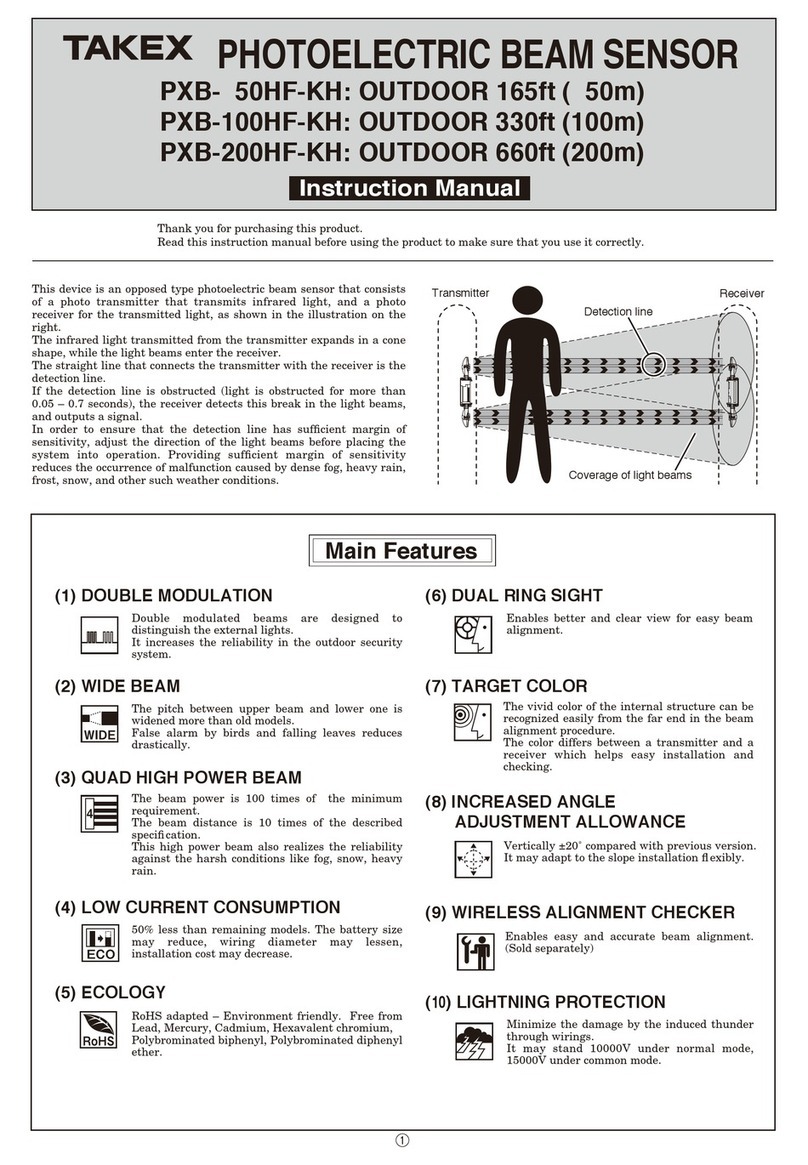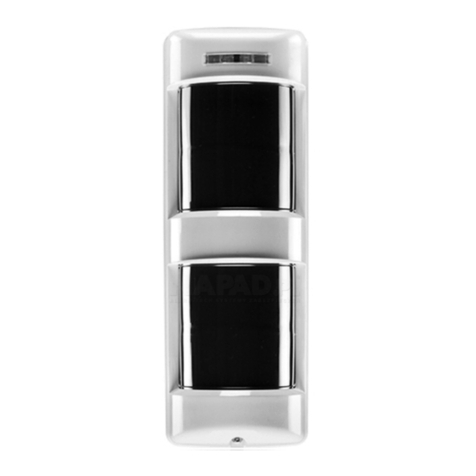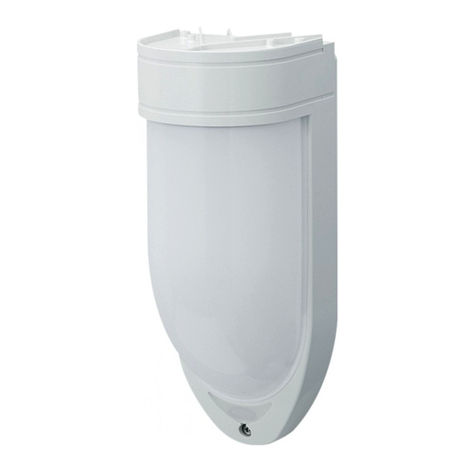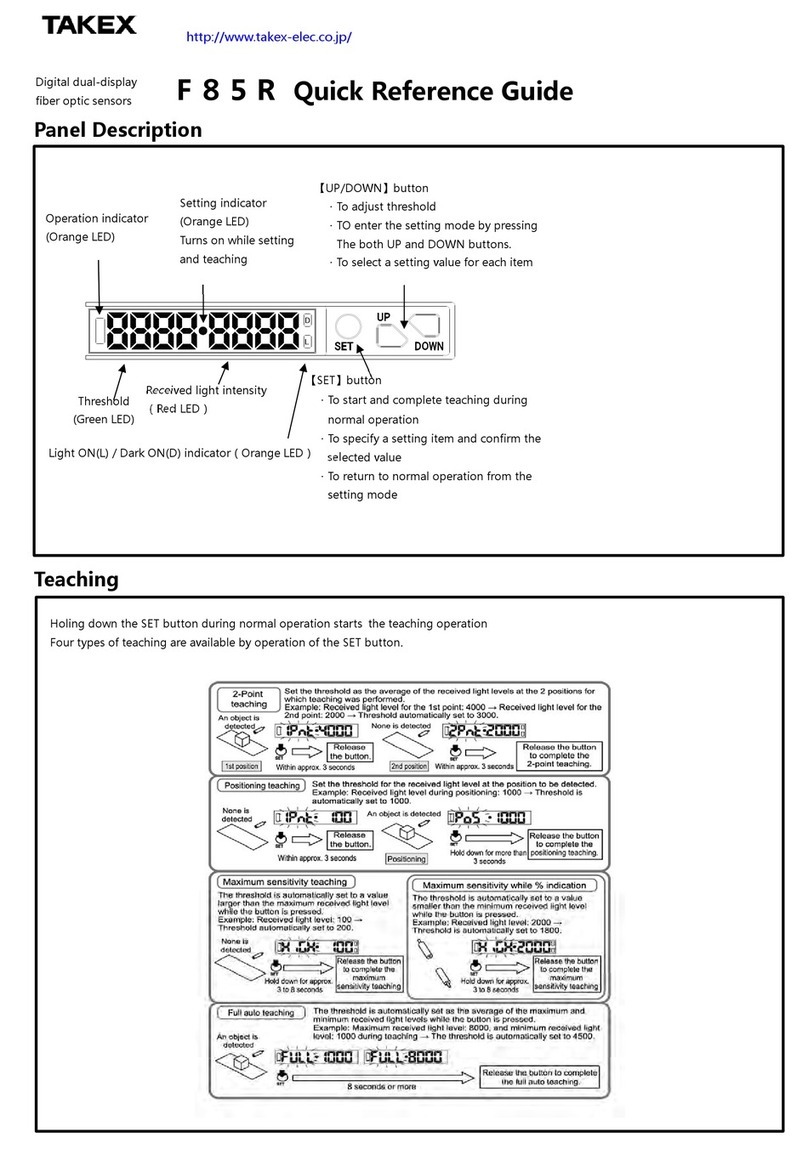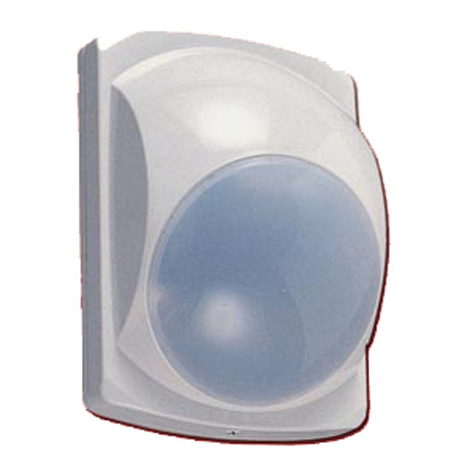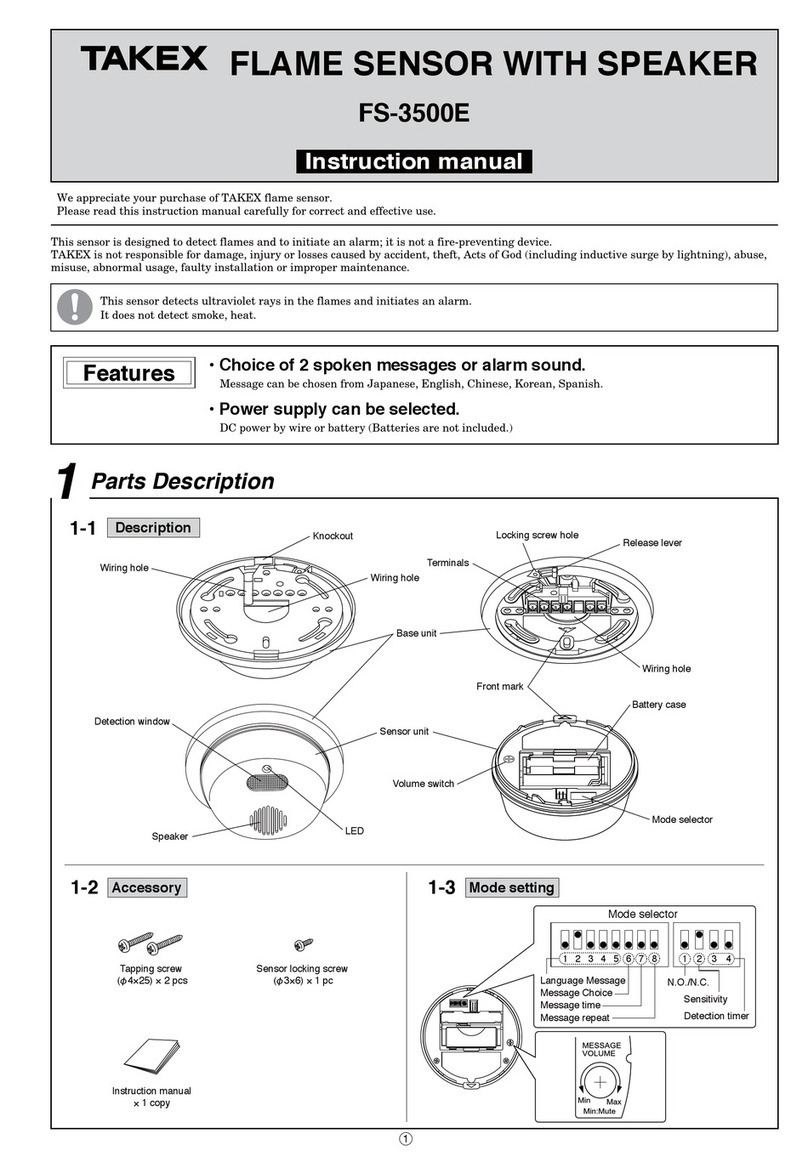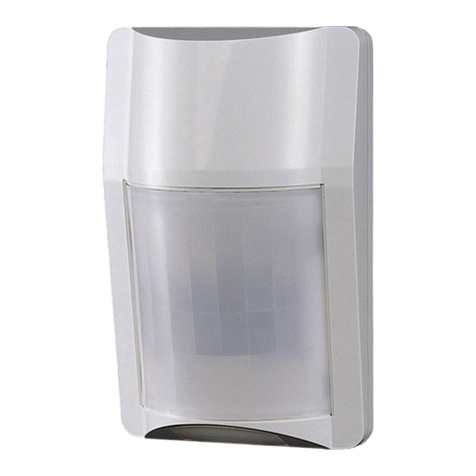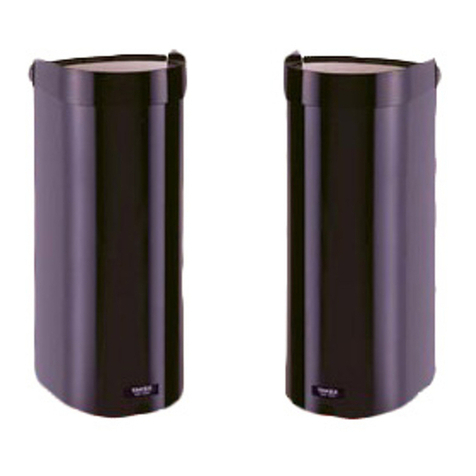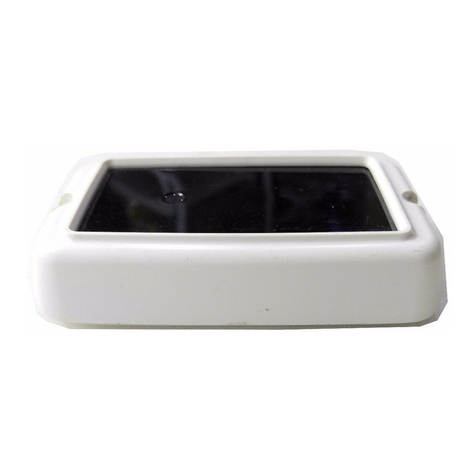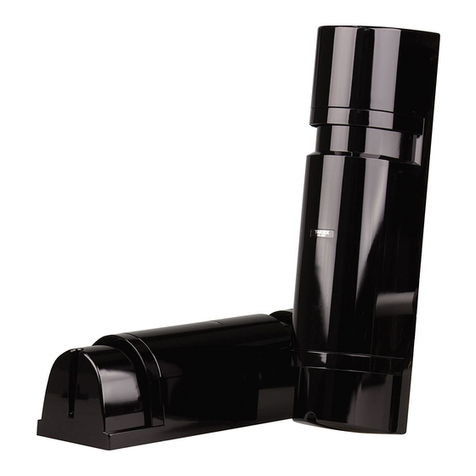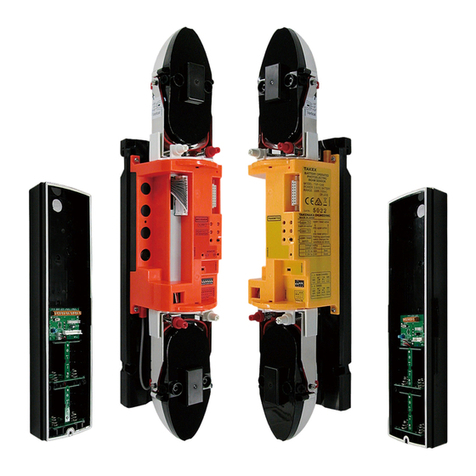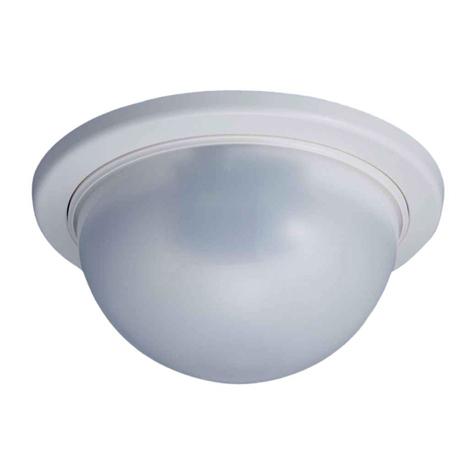7TROUBLESHOOTING
8EXTERNAL DIMENSIONS
9
SPECIFICATIONS
Symptom Possible cause Remedy
1) No power supply.
2) Bad wiring connection or broken wire, short.
3) Beam is reected on another object and sent into the receiver.
LIMITED WARRANTY
1) Turn on the power supply.
2) Check wiring.
3) Remove the reecting object or change beam direction.
Alarm LED does not light
when the beam is broken.
Alarm LED continues to
light.
1) Beam alignment is out.
2) Shading object between sensor and reector.
3) Sensor cover or reector are soiled.
1) Check and adjust again.
2) Remove the shading object.
3) Clean them with a soft cloth. (Except the cover)
1) Bad wiring connection.
2) Change of supply voltage.
3) Shading object between sensor and reector.
4) A large electric noise source, such as power machine, is located
nearby sensor.
5) Unstable installation of sensor and reector.
6) Sensor cover or reector are soiled.
7) Improper alignment.
8) Small animals may pass through the beams.
1) Check again.
2) Stabilize supply voltage.
3) Remove the shading object.
4) Change the place for installation.
5) Stabilize.
6) Clean them with a soft cloth.
7) Check and adjust again.
8) Set the response time longer. (Do not use this setting
where an intruder can run at full speed through the beam.)
Intermittent alarm
●Specications are subject to change without notice.
Knockout
Knockout
□0.47"×0.28"
(□12mm×7mm)
□0.47"×0.28"
(□12mm×7mm)
2-φ0.16"
(φ4)
3-φ0.16"
(φ4)
Wiring lead
Middle point
of the sensor
lenses
Center of
the reflector
0.79"(20mm)
3.29"
(83.5mm)
3.29"
(83.5mm)
2.85"
(72.5mm)
0.57"
(14.5mm)
1.73"
(44mm)
0.47"
(12mm)
2.87"(73mm) 2.81"(71.5mm)
3.66"(93mm) 3.94"(100mm)
0.98"
(25mm)
0.59"(15mm)
1.12"(28.5mm)
6.69"(170mm)
9.11"(231.5mm)
5.91"(150mm)
Model
Detection system
Protection distance
Supply voltage
Current consumption
Alarm output
Tamper output
Response time
Alarm LED
Attenuation LED
Functions
Ambient temperature range
Mounting positions
Wiring
Weight
Appearance
Accessory
PR-11BE
Near infrared beam interruption system (reective)
Outdoor 3.3 to 36' (1 to 11m)
Indoor 3.3 to 49' (1 to 15m)
10.5V to 30V DC (Non-polarity)
(Class 2 powered device)
55mA or less
Dry contact relay from N/O-N/C
Contact capacity : 30V (AC/DC) 0.5A or less
Relay operation : Interruption time (minimum 2 seconds)
Dry contact relay 1b (N/C)
Action : Activated when cover is detached.
Contact capacity : 30V (AC/DC) 0.5A or less
0.05sec to 0.7sec. (Adjustable by potentiometer)
Red LED
ON : when an alarm is initiated
Red LED
ON : when beam is attenuated
Monitor output
-13°F to + 140°F (-25℃to +60℃)
Outdoor/Indoor
Terminals
Sensor : 15oz (430g) Reector : 17oz (490g)
Sensor : PC resin(wine red)
Reector : acrylic resin (clear), AES resin (black)
Self tapping screw φ4×30 : 4
Attenuation sheet : 2pcs
(for outdoor, for indoor)
REFLECTOR
SENSOR
Check the operation of the unit once a week.
When the cover is stained, just wash it away with waters.
Never clean it with a cloth otherwise it could damage the photocatalytic antifouling lm attached on the sensor cover.
The lm is designed to prevent attenuation of the infrared caused by the stain or the waterdrop from torrential rain.
*Do not clean the cover with a cloth. Just wash it away with water.
〈Daily check〉
〜〜〜〜〜〜〜〜〜〜〜〜〜〜〜〜〜〜〜〜
〜〜〜〜〜〜〜〜〜〜〜〜〜〜〜〜〜〜
CAUTION : The suitability of this device with respect to reducing casualty
hazards or providing a safety function is to be determined in the end-use
application.
No.05-097 1608
In Japan
Takex America Inc.
4/15 Howleys Road, Notting Hill,
VIC, 3168
Tel : +61 (03) 9544-2477
Fax : +61 (03) 9543-2342
Takenaka Engineering Co., Ltd.
83-1, Gojo-sotokan,
Higashino, Yamashina-ku,
Kyoto 607-8156, Japan
Tel : 81-75-501-6651
Fax : 81-75-593-3816
http : // www. takex-eng. co. jp /
Takex America Inc.
151 San Zeno Way
Sunnyvale,
CA 94086, U.S.A
Tel : 408-747-0100
Fax : 408-734-1100
http : // www. takex. com
Takex Europe Ltd.
Aviary Court, Wade Road,
Basingstoke, Hampshire. RG24 8PE, U.K.
Tel : (+44)01256-475555
Fax : (+44)01256-466268
http : // www. takex. com
In the U.S. In the U.K.
In Australia
TAKEX products are warranted to be free from defects in material and
workmanship for 12 months from original date of shipment. Our warranty does
not cover damage or failure caused by natural disasters, abuse, misuse,
abnormal usage, faulty installation, improper maintenance or any repairs other
than those provided by TAKEX. All implied warranties with respect to TAKEX,
including implied warranties for merchantability and implied warranties for
tness, are limited in duration to 12 months from original date of shipment.
During the Warranty Period, TAKEX will repair or replace, at its sole option,
free of charge, any defective parts returned prepaid. Please provide the model
number of the products, original date of shipment and nature of difculty being
experienced. There will be charges rendered for product repairs made after our
Warranty Period has expired.
